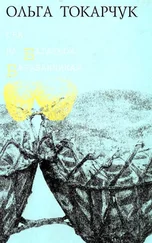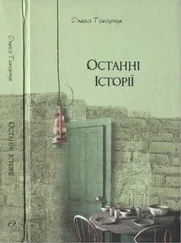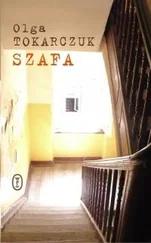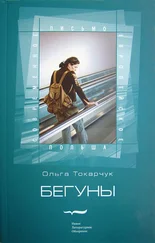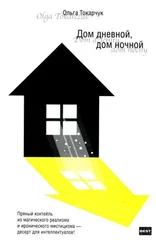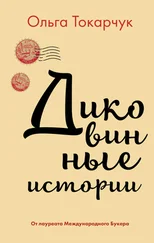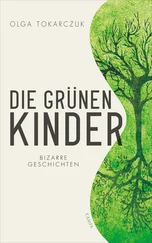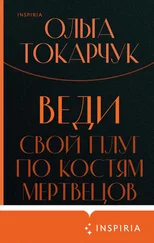We must simply remember the primitive desire to judge what is good and what is bad, just as civilized man must remember primitive drives – revenge, greed, possessiveness. God, which is to say nature, is neither good nor bad; it’s an ill-used intellect that stains our emotions. Filip believed that all our knowledge of nature is in reality knowledge of God. This is what frees us from the sorrow, the despair, the envy and anxiety that are our hell.
It’s true that Filip addressed the leg as though talking to a living, independent person, I will not deny that. Separated from him, it took on some sort of demonic autonomy, simultaneously maintaining with him a painful relationship. I also confess that these are the most unsettling portions of his letters. But at the same time I have no doubt that this is just a metaphor, a kind of mental shortcut. He was thinking that what once formed a whole but was then broken down into parts is still powerfully connected, in an invisible way that is difficult to investigate. For the nature of this relationship is not clear, and it would no doubt elude the microscope.
It is, however, obvious, of course, that we can only trust physiology and theology. These are the two pillars of knowledge. What lies between them does not count at all.
Reading his notes, it must thus be remembered that Filip Verheyen was a man who suffered ceaselessly and without knowing the reason for his pain. Let us keep that in mind when we read his words:
Why am I in pain? Is it because – as that grinder says, and perhaps only in this does he not err – in essence the body and soul are part of something larger and something shared, states of the same substance, like water that can be both liquid and solid? How can what does not exist cause me pain? Why do I feel this lack, sense this absence? Are we perhaps condemned to wholeness, and every fragmentation, every quartering, will only be a pretence, will happen on the surface, underneath which, however, the plan remains intact, unalterable? Does even the smallest fragment still belong to the whole? If the world, like a great glass orb, falls and shatters into a million pieces – doesn’t something great, powerful and infinite remain a whole in this?
Is my pain God?
I’ve spent my life travelling, into my own body, into my own amputated limb. I’ve prepared the most accurate maps. I have dismantled the thing under investigation per the best methodology, breaking it down into prime factors. I’ve counted the muscles, tendons, nerves and blood vessels. I’ve used my own eyes for this, but relied, too, on the cleverer vision of the microscope. I believe I have not missed even the smallest part.
Today I can ask myself this question: what have I been looking for?
Am I doing the right thing by telling stories? Wouldn’t it be better to fasten the mind with a clip, tighten the reins and express myself not by means of stories and histories, but with the simplicity of a lecture, where in sentence after sentence a single thought gets clarified, and then others are tacked onto it in the succeeding paragraphs? I could use quotes and footnotes, I could in the order of points or chapters reap the consequences of demonstrating step by step what it is I mean; I would verify an aforementioned hypothesis and ultimately be able to carry off my arguments like sheets after a wedding night, in view of the public. I would be the mistress of my own text, I could take an honest per-word payment for it.
As it is I’m taking on the role of midwife, or of the tender of a garden whose only merit is at best sowing seeds and later to fight tediously against weeds.
Tales have a kind of inherent inertia that is never possible to fully control. They require people like me – insecure, indecisive, easily led astray. Naive.
I dreamed that I was looking from above at cities splayed out across valleys and on mountain slopes. From that perspective it was very clear that those cities were the felled drunks of once-enormous trees, probably gigantic redwoods and ginkgoes. I wondered how high the trees must have been, since today their trunks contained whole towns. Excited, I tried to calculate their heights, using a simple ratio I remembered from school:
A is to B as
C is to D
-------------------------------
A x D = C x B
If A is the surface of the cross section of the tree, B its height, C the surface area of a town, and D the height of the town-tree I was trying to work out, then assuming the average tree had a cross-sectional area of around 1m 2at its base and a height of 30m, then the town (or rather small settlement) would be 1ha (or 10,000 m 2):
1 – 30
10 000 – D
-------------------------------
1 x D = 10 000 x 30
which gives a result of 300 km.
This was the answer I got in that dream. The tree would have been three hundred kilometres high. I fear this slumbering arithmetic can’t be taken too seriously.
‘It’s not such a great sum, really, in the end. It’s the annual income of a merchant trading with the colonies, on the assumption that there is peace in the world and the English aren’t arresting Dutch ships, resulting in interminable legal wranglings. It is in fact a reasonable sum. To it must be added the cost of strong and stable wooden crates, and transport.’
Peter I, Tsar of the Russian Empire, had just paid this sum for the collection of anatomical specimens amassed over the years by Frederik Ruysch.
The Tsar was travelling all around Europe with a retinue of two hundred people in 1697. He greedily took in everything, but he was most drawn to the Wunderkammers. Perhaps he, too, had some sort of syndrome. After Louis XIV refused the Tsar an audience, he remained for several months in the Netherlands. Several times he came incognito, accompanied by several sturdy-looking fellows, to De Waag, to the Theatrum Anatomicum, where with a look of concentration on his face he watched the fluid movements of the professor as his scalpel opened and displayed to the public the bodies of the condemned. He also initiated a kind of friendship with the master. It could be said that they became close, as Ruysch taught the Tsar how to preserve butterflies.
But what he liked the most was Ruysch’s collection – hundreds of specimens enclosed in glass jars, swimming in fluid, a panopticum of the human imagination broken down into component parts, a mechanical cosmos of organs. He got chills when he looked at human fetuses, and he couldn’t take his eyes off them, so fascinating was the sight. And the dramatic, fanciful arrangements of human bones that got him into a pleasant, contemplative mood. He had to have the collection for himself.
The jars were carefully packed into boxes lined with tow, tied with twine, and taken by horse to the port. Some dozen sailors spent an entire day loading the valued goods below deck. The professor himself supervised the loading, cursing and flying into rages because one careless movement had already destroyed a beautiful example of acephaly, a very rare specimen. Ordinarily he didn’t keep aberrations, preferring to focus on pieces which reflected the beauty and harmony of the body. Now the glass cover had broken, his famed conserving mixture pouring out onto the pavement and soaking in between the paving stones. The specimen, meanwhile, had rolled down the dirty street, rupturing in two places. On one shard of glass a label inscribed carefully in the hand of the professor’s daughter was visible, with an ornate inscription in a black frame: ‘ Monstrum humanum acephalum ’. A rare specimen, extraordinary. A shame. The professor had wrapped it up in a handkerchief and, limping, carried it home. Perhaps something could still be done with it.
Читать дальше

